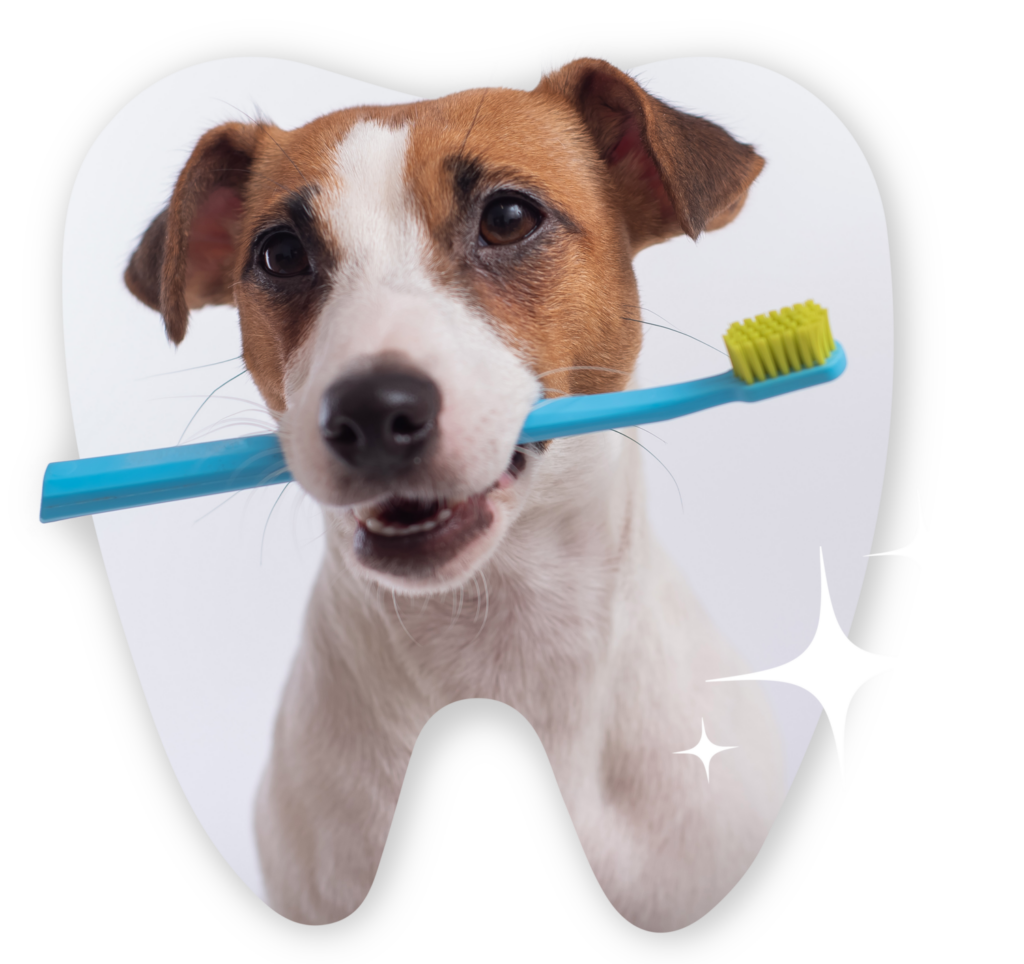Dental Days Deal
$100 off Dental Cleanings
For new and existing clients!
Call (973) 228-4021 to schedule a cleaning today!

Veterinary Medical Center of Caldwell offers full pet dental care services in Caldwell, NJ, including cat and dog teeth cleaning procedures and guidance for effective at-home care. We recommend visiting our clinic at least once a year for a complete dental exam for your pet and a professional teeth cleaning if necessary. Our philosophy of preventative medicine translates into dental care, with our emphasis on routine checkups, at-home dental care, and yearly oral exams and teeth cleanings to prevent dental disease from developing and progressing in your companion.
Does Your Pet Need Dental Care?
Dental disease is not easy to see unless you know exactly what to look for in your pet. When we examine pets for oral issues, this is what we look for:
Bad breath
Broken, loose, or missing teeth
Discoloration or tartar buildup
Excessive chewing or drooling
Reduced appetite or inability to chew
Swelling and/or bleeding in or around the mouth

Pet Dental Care FAQs
What does a dog/cat dental cleaning entail?
When your pet arrives at our animal hospital for their dog/cat teeth cleaning, we will do a physical exam and run bloodwork to ensure there are no underlying health concerns. Each patient has an intravenous (IV) catheter placed by a technician, allowing us to deliver fluids throughout the procedure to support blood pressure and hydration.
In some cases, injectable antibiotics and pre-emptive pain medication may be administered before placing your pet under a light plane of general anesthesia. The veterinarian will perform a full-mouth examination of the teeth, lips, gums, and tongue, searching for bone loss, loose or broken teeth, and signs of oral cancer or infection. Any abnormalities discovered will be noted in your pet’s medical records and the veterinarian will devise a customized treatment plan. A technician will then clean and polish each tooth, remove buildup and debris from under the gumline, and finish the procedure with a fluoride treatment.
Why are dental X-rays important?
Dental radiology (X-ray) is an essential tool for finding underlying dental disease and other issues. Roughly just 50% of each tooth is above the gumline; therefore, X-rays make it possible for us to visualize the part of the tooth (and the entire jawbone) that is otherwise fully hidden. Full mouth X-rays are recommended during any dental procedure to help us detect hidden issues such as root abscesses, root fractures, severe bone loss, and cystic lesions.
What is an oral health procedure?
STEP 1: SUPRAGINGIVAL CLEANING
The tartar and plaque that is visible above the gum line is removed so that all surfaces of each tooth may be visualized.
STEP 2: SUBGINGIVAL CLEANING
This is cleaning the area under the gum line. In our animal patients, this is the most important step. The subgingival plaque and calculus is what causes periodontal disease. This is the most common ailment diagnosed in ALL animal patients. Cleaning the tooth surface above the gum line will make the teeth look nice, but in reality does little medically for the patient.
STEP 3: ASSESSMENT
The veterinarian evaluates the entire oral cavity and records any abnormalities on a special dental record. Some examples of oral abnormalities are: tongue or lip lesions, deep pockets in the gums around the teeth and loose, broken or discolored teeth.
STEP 4: DENTAL IMAGING
Dental Imaging is recommended for every tooth in the mouth to discover problems, such as retained roots, enamel defects, root abscesses and bone loss due to infection.
STEP 5: POLISHING
The mechanical removal of the plaque and calculus causes microscopic roughening of the tooth surface. This roughening increases the retentive ability of the tooth for plaque and calculus. Polishing will smooth the surface and decrease the adhesive ability of plaque.
STEP 6: SUB-GINGIVAL LAVAGE
The scaling and polishing of the teeth will cause a lot of debris to become trapped under the gums. This will cause local inflammation, as well as increase the chance of future periodontal disease. For this reason, we gently remove the gingiva with an antibacterial solution.
STEP 7: TREATMENTS
If any abnormalities were found during the assessment and Dental Advanced Imaging, various treatments may be recommended. Some examples of treatments are: tooth extraction, bonded sealants of fractures and local antibiotic treatment of pockets around the teeth. The veterinarian will explain any abnormalities and discuss treatment options. We are happy to provide an estimate at each stage of this procedure.
STEP 8: PREVENTION
Prevention is one of the most important parts of the oral hygiene procedure.
Could my pet be in pain?
Animals have a strong natural instinct to hide pain, making it difficult to recognize signs of discomfort or soreness. Some indications that your pet may be in pain include increased licking, altered or heavy breathing, changes in posture, changes in appetite, and changes in sleep habits. If you recognize any of these signs, walk in or schedule an appointment to see a veterinarian at our hospital in Caldwell, NJ.


